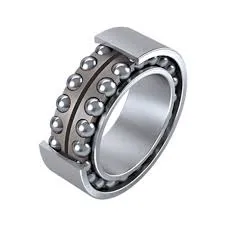
নভে. . 05, 2024 15:23 Back to list
taper roller bearing size chart mm
Understanding Taper Roller Bearing Size Chart in Millimeters
Taper roller bearings are essential components in modern machinery, providing support and enabling the smooth rotation of shafts and wheels. Their unique design, characterized by tapered inner and outer raceways and rolling elements, allows them to handle both radial and axial loads efficiently. One crucial aspect of working with taper roller bearings is understanding their size, which is typically represented in millimeters.
What Are Taper Roller Bearings?
Taper roller bearings consist of an inner ring, outer ring, tapered rolling elements, and a cage. The tapered design allows the bearings to effectively support heavy loads, making them suitable for a variety of applications such as automotive wheels, construction equipment, and industrial machinery. The ability to accommodate combined loads (radial and axial) is a major advantage that sets them apart from other types of bearings.
Importance of Size Charts
Size charts are invaluable tools for engineers, mechanics, and those involved in maintenance and repair work. They provide standardized measurements for various types of bearings, including taper roller bearings. By consulting a size chart, one can determine the appropriate bearing dimensions, including the outer diameter, inner diameter, width, and load capacity.
Understanding the Size Chart
A taper roller bearing size chart typically includes several key dimensions
1. Bore Diameter (d) This is the inner diameter of the bearing, measured in millimeters. It is crucial for ensuring the bearing fits properly onto the shaft.
2. Outer Diameter (D) The outer diameter is the diameter of the outer ring. It should be measured accurately to ensure proper fitting within the housing.
3. Width (B) This measurement indicates the thickness of the bearing. The width is important for axial load capacity and overall bearing stability.
taper roller bearing size chart mm

4. Cup and Cone Designation Taper roller bearings are often designated by a cup and cone reference, where the cup refers to the outer ring and the cone refers to the inner ring with rollers. This designation helps in quickly identifying the bearing type.
5. Load Capacity The size chart will also provide information regarding the dynamic and static load capacities of the bearing. Knowing the load limits is critical to ensure safety and performance in applications.
Reading the Size Chart Example
For example, consider a taper roller bearing with the following specifications
- Bore Diameter (d) 30 mm - Outer Diameter (D) 62 mm - Width (B) 16 mm
From the size chart, you would also find the specified load capacities such as a dynamic capacity of, say, 10,000 N and a static capacity of 12,000 N. Understanding these values allows users to select the right bearing for their specific load requirements.
Application of Size Charts
In practical applications, selecting the correct size of taper roller bearing can prevent premature wear and failure. For instance, if an engineer chooses a bearing with a smaller bore diameter than required, it may lead to improper fit and potential shaft damage. Conversely, selecting a bearing with a higher load capacity than necessary may increase costs without providing additional benefits.
Conclusion
Taper roller bearings play a critical role in the functionality of many machines and vehicles. The ability to understand and utilize size charts that provide specifications in millimeters is essential for engineers and technicians involved in equipment design, maintenance, and repair.
By familiarizing oneself with the various dimensions and load capacities indicated in a taper roller bearing size chart, users can ensure optimal performance, longevity, and reliability in their equipment. Whether in industrial settings or automotive applications, the correct selection of taper roller bearings based on accurate size charts leads to enhanced productivity and reduced downtime, ultimately contributing to the efficiency of operations.
Latest news
-
Spherical Roller Bearings Applications: Heavy Duty, Self-Aligning
NewsAug.30,2025
-
Premium Deep Groove Ball Bearings | High Speed & Reliability
NewsAug.29,2025
-
Durable Scaffolding Clamps - Secure & Reliable Tube Connectors
NewsAug.28,2025
-
Common Failures in Thrust Ball Bearings and Solutions
NewsAug.22,2025
-
How Tapered Roller Bearings Can Take Shock Loads
NewsAug.22,2025
-
Angular Bearings in High-Precision Spindles
NewsAug.22,2025
